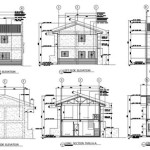Essential Aspects of Tall House Plants Easy Care
Tall house plants can bring a touch of nature and elegance to any room. With their towering height and lush foliage, they create a striking visual impact that can transform the ambiance of your home. However, caring for tall house plants can sometimes seem daunting, especially if you're not an experienced gardener. Here are some essential aspects of tall house plants easy care to help you keep your green giants thriving:
Lighting
Light is crucial for all house plants, and tall plants are no exception. Determine the light requirements of your specific plant and provide it with the appropriate amount of light. Some plants, such as fiddle-leaf figs and snake plants, prefer bright, indirect light, while others, like palms and dracaenas, can tolerate low-light conditions. Avoid placing your tall house plants in direct sunlight, as this can scorch their leaves.
Watering
Watering tall house plants can be a bit tricky, as their root systems may extend deep into the soil. It's important to avoid overwatering, which can lead to root rot. Allow the top few inches of soil to dry out before watering again. Use a moisture meter to ensure that the soil is evenly moist throughout the pot. During the winter months, you may need to water your plant less frequently.
Fertilizing
Fertilizing your tall house plant regularly will help it stay healthy and promote new growth. Use a balanced, liquid fertilizer diluted to half strength. Fertilize your plant every few weeks during the growing season (spring and summer) and reduce fertilizing during the winter months when growth slows down.
Pruning
Pruning is essential for maintaining the shape and size of your tall house plant. Remove any dead or damaged leaves as they appear. You can also prune back long, leggy stems to encourage bushier growth. When pruning, make clean cuts just above a leaf node or branch junction.
Repotting
As your tall house plant grows, it may need to be repotted into a larger container. Repotting provides fresh soil and more space for the plant's roots to grow. Choose a pot that is slightly larger than the current one and make sure it has drainage holes to prevent waterlogging.
Support
Some tall house plants may need support to prevent them from toppling over. You can use stakes or trellises to provide additional support. Insert the stakes or trellises into the soil next to the plant and gently tie the stems to the supports.
Common Problems
Here are some common problems you may encounter when caring for tall house plants:
- Yellowing leaves: This can indicate overwatering, nutrient deficiencies, or lack of light.
- Brown leaf tips: This can be caused by underwatering, low humidity, or excessive sunlight.
- Drooping leaves: This may indicate underwatering or root rot.
- Pests: Tall house plants can be susceptible to pests such as spider mites, mealybugs, and aphids. Treat pests promptly using an appropriate insecticide.

20 Large Indoor Plants That Make Your Home An Oasis

5 Of The Best Tall Indoor Plants Grow Centre
:strip_icc()/weeping-fig-product-846a66cb96714261adca9c347d1322c2.jpg?strip=all)
18 Tall Indoor Floor Plants To Make A Statement

The Best Large Indoor Plants For Low Light 136 Home

20 Large Indoor Plants That Make Your Home An Oasis

21 Best Indoor Trees And Tropical Plants To Grow In Your House Architectural Digest

Low Maintenance Houseplants Easy Care Plants Oxy

The Best Large Indoor Plants For Low Light 136 Home

The Best And Easiest Indoor Houseplants That Won T Die On You

Indoor Plants The Home Depot








